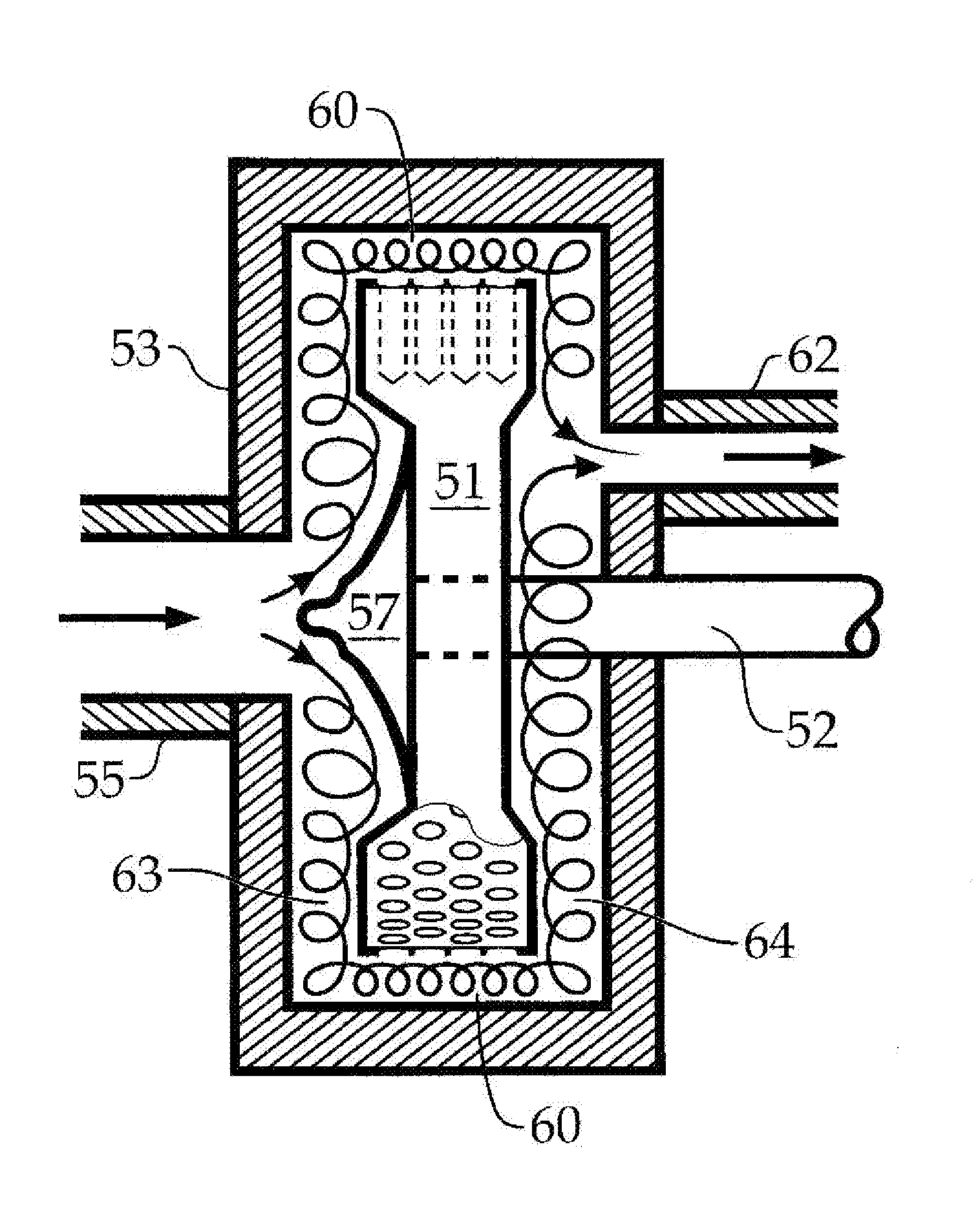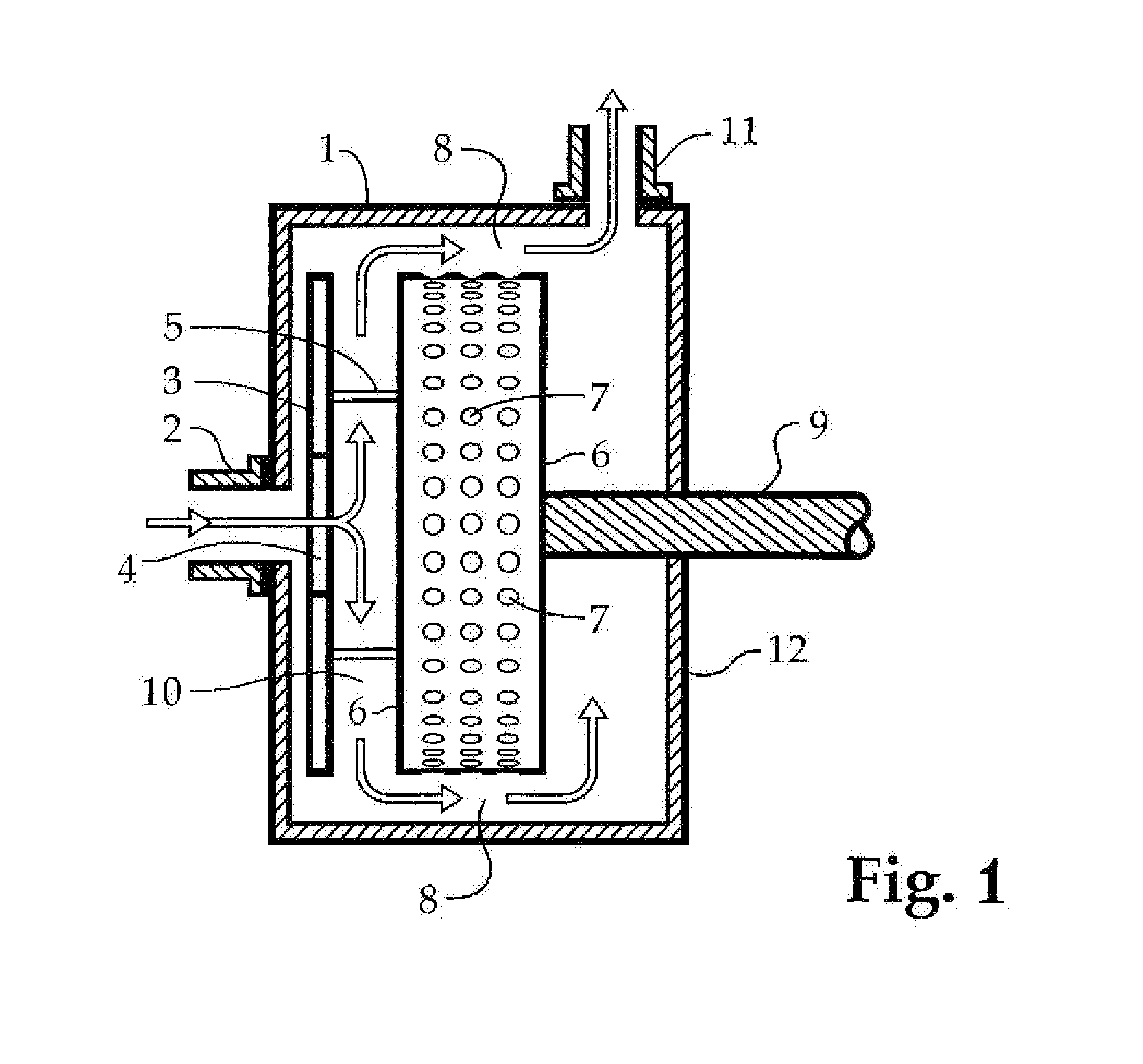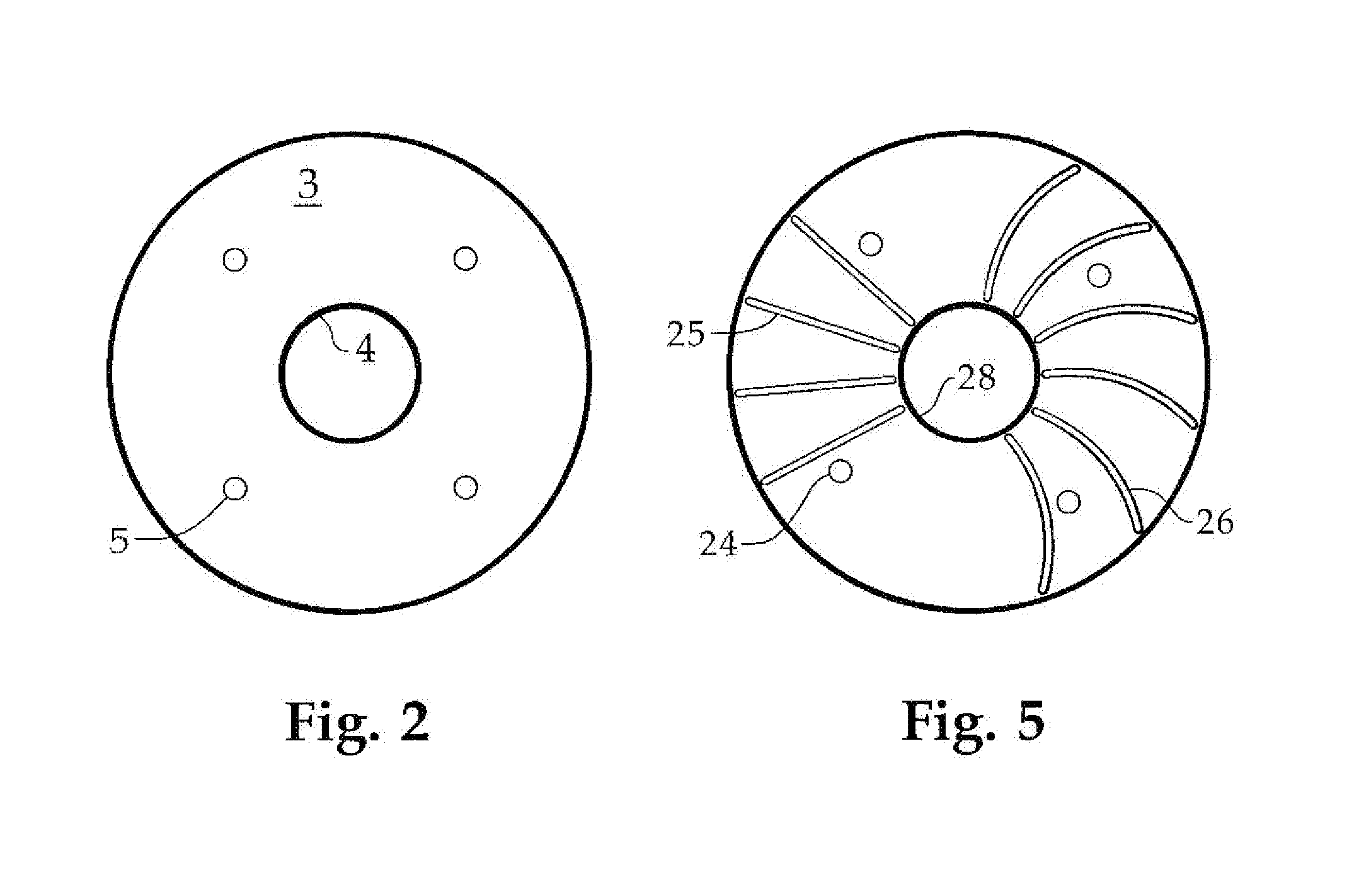Cavitation Device
a cavitation device and cavitation tube technology, applied in the direction of liquid fuel engines, machines/engines, transportation and packaging, etc., can solve the problems of heat energy to be imparted into the liquid, impeller blades, and damage to the pump, so as to facilitate the pumping effect and ameliorate the drag
- Summary
- Abstract
- Description
- Claims
- Application Information
AI Technical Summary
Benefits of technology
Problems solved by technology
Method used
Image
Examples
Embodiment Construction
[0031]Referring first to FIG. 1, the cavitation pump is shown in section and more or less diagrammatically. Fluid enters a housing 1 through a conduit 2 passing through central hole 4 in solid disc 3. Solid disc 3 is held in place by disc supports 5, which are attached to cavitation rotor 6. Cavitation rotor 6 is substantially cylindrical in shape and has a plurality of cavities 7 on its cylindrical surface. Housing 1 is also substantially cylindrical in shape so that its inside surface can accommodate the cylindrical surface of the cavitation rotor 6 substantially concentrically and in close proximity. That is, the peripheral space 8 between the cavitation rotor 6 and the substantially concentric internal surface of the housing 1 is somewhat constricted to enhance the efficiency of the cavitation effects on the fluid, as will be explained more fully below. Cavitation rotor 6 is mounted on a shaft 9 which passes through the end wall 12 of housing 1 by way of a thrust bearing having ...
PUM
 Login to View More
Login to View More Abstract
Description
Claims
Application Information
 Login to View More
Login to View More - R&D
- Intellectual Property
- Life Sciences
- Materials
- Tech Scout
- Unparalleled Data Quality
- Higher Quality Content
- 60% Fewer Hallucinations
Browse by: Latest US Patents, China's latest patents, Technical Efficacy Thesaurus, Application Domain, Technology Topic, Popular Technical Reports.
© 2025 PatSnap. All rights reserved.Legal|Privacy policy|Modern Slavery Act Transparency Statement|Sitemap|About US| Contact US: help@patsnap.com



